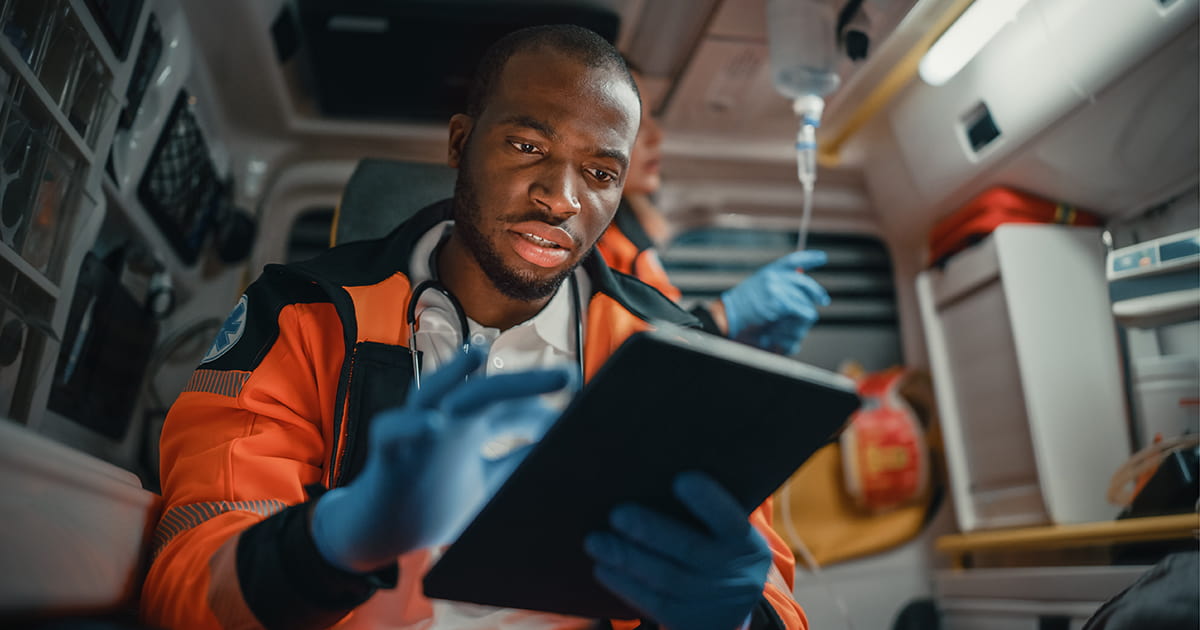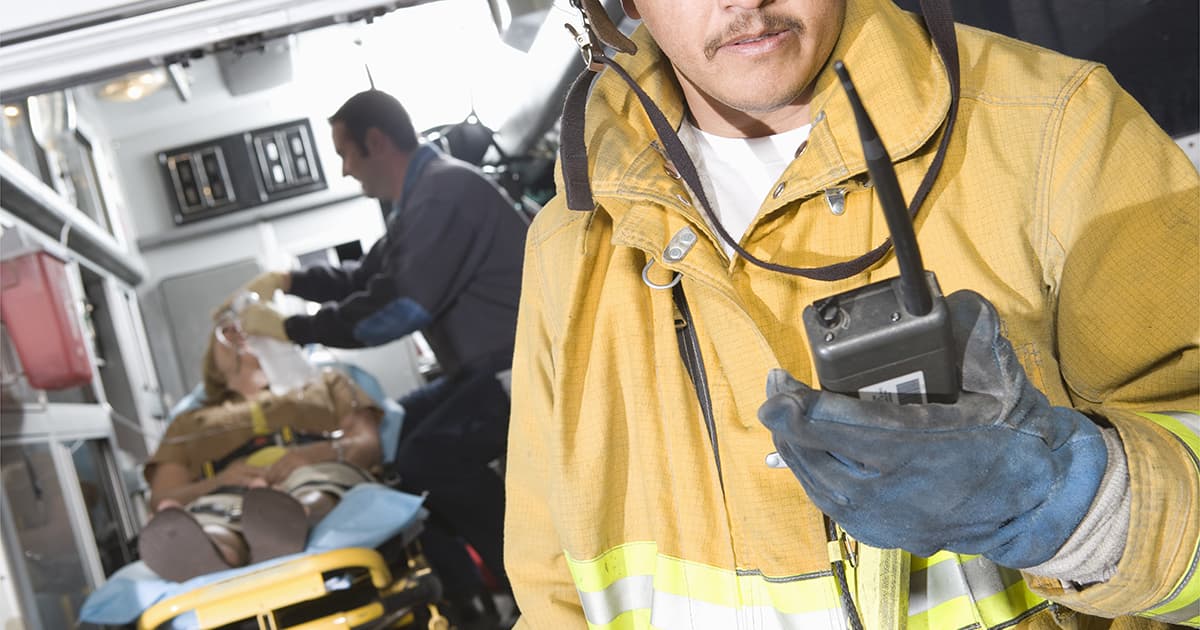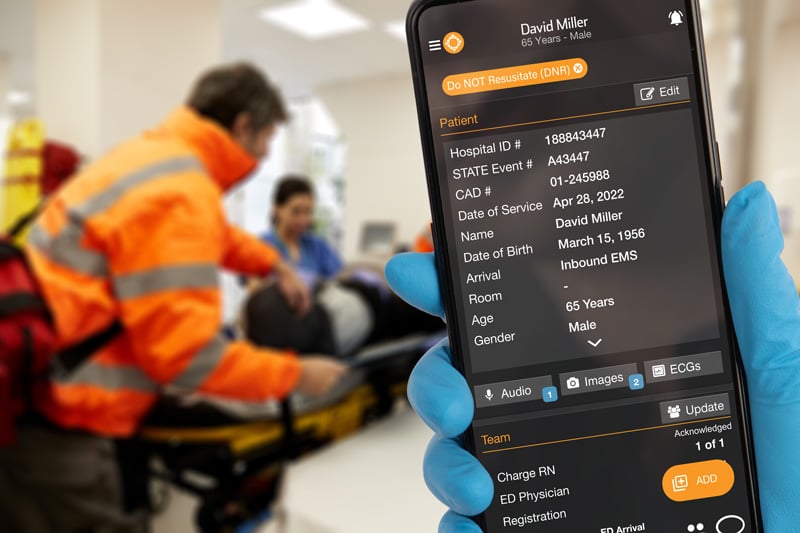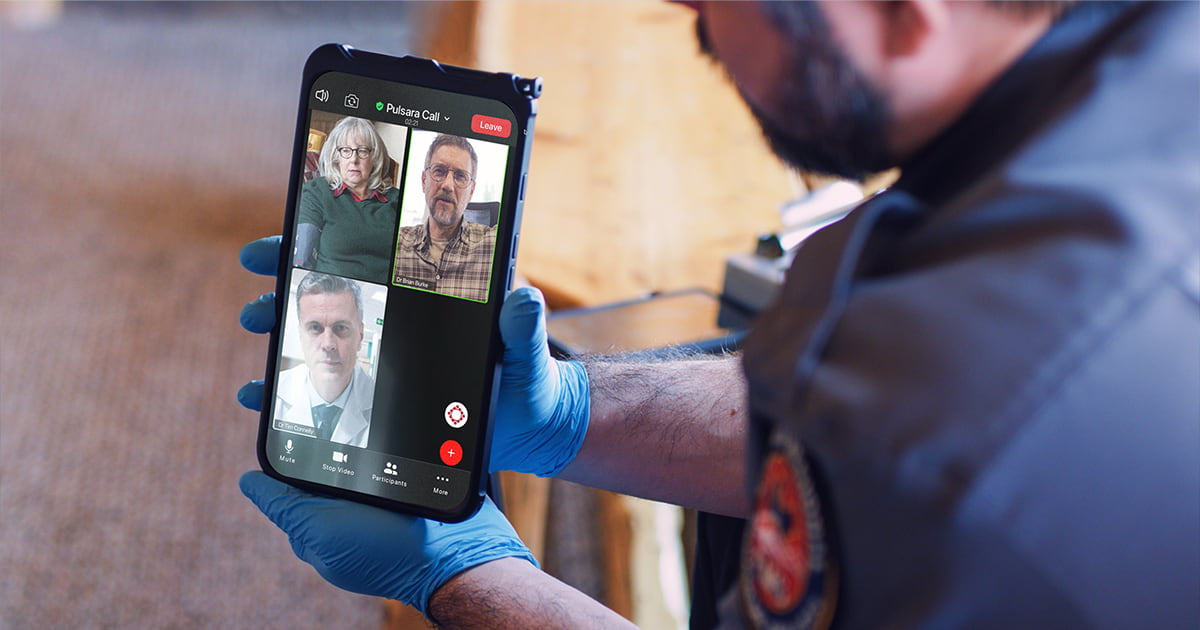Pulsara Around the World - 2025 Recap and January 2026
December Recap After an incredibly busy events year with 102 conferences, trade shows, and sponsorships, December was on the slower side for us, with...

The radio has long been the lifeline for first responders, but new technologies and functions require fire and EMS organizations to think more broadly about how they communicate in the field
EDITOR'S NOTE: This article originally appeared on FireRescue1.com. Special thanks to our guest author, Robert Avsec, for FireRescue1 BrandFocus.
__
For an industry long dependent upon land mobile radios (e.g., mobile units in ambulances and handheld units), there have been many hardware advancements and additions since the days of firefighter/paramedics Johnny Gage and Roy DeSoto responding to emergencies and communicating with Rampart General via the telemetry radio in the “orange box.” Putting mobile computer terminals in ambulances was one of those developments, followed by notebook computers and tablets, and more recently, smartphones.
While significant advancements have been made in the communications hardware used by fire and EMS providers, effective and efficient communication is still an issue for responders for a variety of reasons. Many issues can adversely affect communication in the field, especially when it comes to patient care information.
Here, we consider 10 of the most common communication challenges and what fire and EMS leaders can do to address them:
Many public safety organizations struggle financially to support and upgrade communications hardware, whether it’s land mobile radios or smartphones, tablets, etc. So long as it works, that must be good enough. And then there’s software or apps for those devices that are not being upgraded because of lack of funding and technical support.
Solution: Look for grant money to help address these hardware deficiencies. A good place to start is the FirstNet website to identify devices that are designed for the high-speed, nationwide wireless broadband network dedicated to public safety. Another good resource is FireGrantsHelp, where you can learn about available grants and get help with the application process.
Any handheld device needs a reliable power source. Without a battery management system, users don’t know if they have a new battery or an old one, when a battery was last charged, or how long it will supply power. Those are issues whether the battery is installed in a handheld radio or being carried as a spare.
Solution: A battery management system helps to extend battery lifetime and ensure that the batteries are optimally maintained to be ready for mission-critical operations. Handheld radio manufacturers (e.g., Kenwood, Motorola, L3Harris) have developed BMS packages for use with their radios. A BMS will provide the capability to charge batteries as well as provide battery management information like battery type, model name, voltage, temperature, discharge cycle, expected life and remaining capacity.
Another issue is lack of maintenance on mobile and handheld radios. Today’s radios are programmed the same as any other computer. The solid-state components allow for miniaturization to keep the radio a suitable size. But strong magnetic fields near the radios will cause damage or erase programming.
Solution: Today’s radios are technological wonders, but they still need preventative maintenance, according to radio manufacturers. The same goes for staying on top of critical software updates for your mobile devices. Check with your radio and device vendors for best practices specific to your hardware and software.

Years ago, most agencies could use handheld radios to converse with employees throughout their municipality. With the increased use of Wi-Fi, commercial two-way radio systems and other radio frequency devices, agencies found they could no longer communicate without more support. The need for repeaters increased. Multicast, simulcast and trunked radio systems were designed and implemented to improve LMR service for the agencies’ needs.
That land mobile radio infrastructure has also fallen on tough times as municipalities struggle to fund everyday services, leaving little money available to keep that infrastructure up to date. “Dead zones” where users encounter lack of radio and wireless service coverage or operate out of range of cell towers result in lack of internet access – and dropped calls at critical moments.
Solution: Review your service agreement and coverage with your current radio and wireless providers and compare them to other carriers to find the best available coverage. You may need to update your hardware to boost signal and reception as well.
Many public safety answering points – the location where 911 calls are answered and processed for dispatch – have ultramodern computer-aided dispatch systems that are linked to local government information systems, making a plethora of information available to the public safety telecommunicator. But in many localities, this level of technical integration with the local EMS provider is not at the level necessary to effectively and efficiently let the incident commander or EMS provider know what the call-taker or dispatcher knows.
Additionally, there can be a communication gap between what the responders on scene have learned and the communication of that information to other responding resources (e.g., mutual aid, ambulance or medevac helicopter).
Solution: Developers of apps for wireless devices are developing and delivering software solutions that enable on-scene EMS providers to enter data in real time while completing scene assessments and patient care surveys. As that data is entered into the device, it becomes available to everyone in the patient care continuum using the same app so that no information falls through the cracks. This helps everyone know what has happened, what’s already been done and what potentially needs to be done to provide a better outcome for the patient.
Data sharing isn’t only limited to the out-of-hospital responders. Valuable time is wasted when what EMS providers know in the field is not communicated to the receiving medical facility until the ambulance arrives.
However, the types and amount of information gathered by prehospital providers when initially treating a patient in the field is greater than ever because of the biomedical equipment now in use in the field. Unfortunately, much of that biomedical technology was not necessarily developed with communication in mind, so EMS providers find themselves having to figure out how to integrate the biomedical equipment with their existing communications hardware and software. Look for a solution that integrates these tools to make communication faster and easier.
Solution: Simplify your process for sharing patient data with the receiving facility. Companies like Pulsara are developing and delivering software solutions, data analytics and services for EMS organizations, hospitals, community paramedicine programs, fire departments and emergency management and preparedness agencies that can help your organization to be safer, more effective and more efficient.

Because today’s radio is also a computer, concern surrounding viruses or hacking of radios could be a problem for public safety agencies. This is especially important for compliance with HIPAA when transmitting patient information.
In March, FirstWatch and the White House warned of potential Russian cyberattacks on public safety organizations – just the latest of a growing number of cybersecurity threats. In fact, FireRescue1 Editorial Director Greg Friese warned in 2021 that cyberattackers are coming for public safety and encouraged readers to prepare now.
Solution: Cybersecurity expert Rick Simonds lists these steps your organization should take to assess and address the cybersecurity threat to your communications hardware:
More complicated response efforts require greater interoperability. Mass shootings, motor vehicle crashes involving multiple vehicles and natural disasters are happening with great frequency and severity, requiring more interagency cooperation and response. Further complicating matters is the fact that many EMS providers in the field are using different software and apps on their wireless devices than the hospitals with which they coordinate.
Solution: Meet with your neighboring agencies to compare notes and strategize about how you can better communicate and cooperate with one another. Then consider how best to align services. A platform like Pulsara can help close the communication gap with group video conferencing, browser-based command center functionality, one-touch notification by EMS to receiving hospitals and more.

Just because your department has always handled communication a certain way doesn’t mean it’s still working, or that everyone in your department understands the protocol and lingo. In fact, NIOSH reports over the past three decades show that radio communication problems remain one of the top 10 contributing factors to line-of-duty deaths. When was the last time your crew practiced these often overlooked but critical skills?
Solution: Embrace the echo principle, recommended by the National Incident Management System as the best practice for radio communication. In short, this involves repeating essential parts of the message to the sender to confirm the information. Also make sure everyone is speaking the same language, including mutual aid partners. Train and practice using any specific terms or shorthand so everyone understands what’s being said.
In a recent survey, EMS providers flagged as a pain point not knowing if someone (e.g., another EMS provider, supervisor or ED staff) has received, read and understood their message. They’re also concerned about not getting responses from ED staff or staff at another medical facility acknowledging that they’ve received and understood patient care data (e.g., EKGs, ultrasound images, photographs) transmitted from the field.
Solution: It’s critical to ensure that the facility receiving the patient has the information they need to administer appropriate care. With the Pulsara app, the EMS provider on scene can quickly start a case and share vital patient care details with other responding EMS resources and medical facilities while they are obtaining that information and entering it into their wireless device. More importantly, the Pulsara app provides an efficient and effective communication tool that can bring everyone into the patient care information loop with features like one-tap team notifications, image sharing, audio/video calls, ETA alerts and more.
As the saying goes, if you fail to plan, you plan to fail. Review and refine your organization’s communication strategy – or create one if you haven’t done so already – and be sure to train all crewmembers. Knowing the most efficient and effective way to use your communication hardware and software will help avoid misunderstandings at critical moments.
Battalion Chief Robert Avsec (ret.) served with the Chesterfield (Virginia) Fire & EMS Department for 26 years. He was an instructor for fire, EMS and hazardous materials courses at the local, state and federal levels, which included more than 10 years with the National Fire Academy. Chief Avsec earned his bachelor’s degree from the University of Cincinnati and his master’s degree in executive fire service leadership from Grand Canyon University. He is a 2001 graduate of the National Fire Academy's EFO Program. Beyond his writing for FireRescue1.com and FireChief.com, Avsec authors the blog Talking "Shop" 4 Fire & EMS. Connect with Avsec on LinkedIn or via email.
![]()
Chronic stress may not seem like a big deal, but it has a variety of wide-ranging effects. Check out 10 Things You Need To Know About PTSD And Chronic Stress In EMS to learn more.

December Recap After an incredibly busy events year with 102 conferences, trade shows, and sponsorships, December was on the slower side for us, with...

Editor's Note: In July 2025, EMS1 and Fitch & Associates released their annual EMS trend survey, What Paramedics Want, proudly sponsored by Pulsara....
![[PRESS RELEASE] Published Research Finds Up to 31% Faster STEMI Treatment Times in Rural Hospital Setting with Pulsara](https://www.pulsara.com/hubfs/_1_website-page-blog-assets/pulsara-hosp-teams-assign-cardio-stemi-rn-1200x701.jpg)
Published research shows how using Pulsara, alongside standardized field activation and a focus on stakeholder relationships, improves STEMI care and...